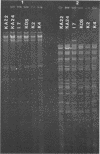Abstract
It has been documented that KOS, a laboratory strain of herpes simplex virus type 1, is several orders of magnitude less neurovirulent than most other wild-type strains. Studies initiated to determine the functional nature of the block to neuroinvasiveness and to establish the genes involved have determined that, after footpad inoculation of mice, strain 17 syn+ induced neuropathologic signs (paralysis) at titers of 10(2) and yielded a PFU/50% lethal dose ratio of 10(4). In contrast, KOS was not lethal and did not induce paralysis at inoculation doses of 10(8) PFU. This reduced neurovirulence of KOS could not be explained by the lack of thymidine kinase activity, its inability to replicate in mouse cells maintained in culture at 38.5 degrees C, or its inefficient replication in nonneural tissues in vivo. Kinetic experiments tracing the virus through the nervous system after footpad inoculation showed that KOS was blocked at the level of the spinal ganglia. A cosmid library of strain 17 syn+ was utilized in recombination and in vivo selection experiments with strain KOS to establish the genomic region involved in 17 syn+ neuroinvasiveness. A cosmid clone containing the HindIII A fragment (0.25 to 0.53 map units) of strain 17 syn+ in mixed transfections with full-length KOS DNA yielded recombinants with enhanced neuroinvasiveness.
Full text
PDF
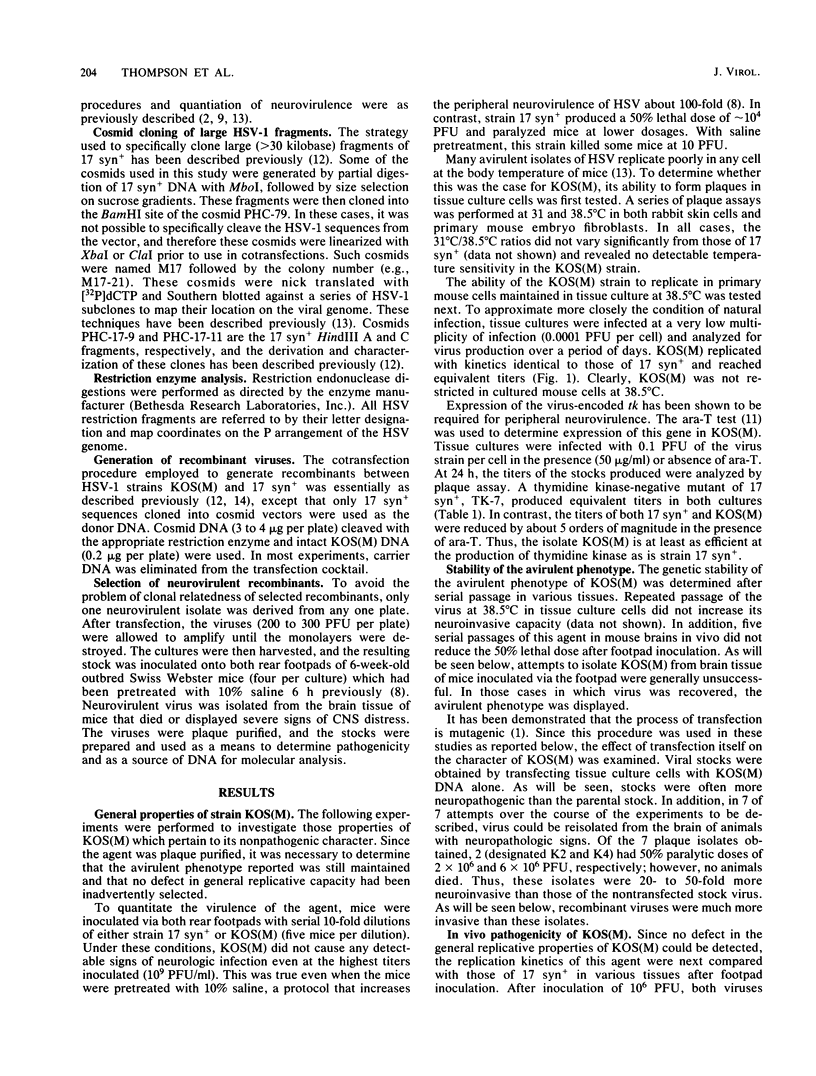
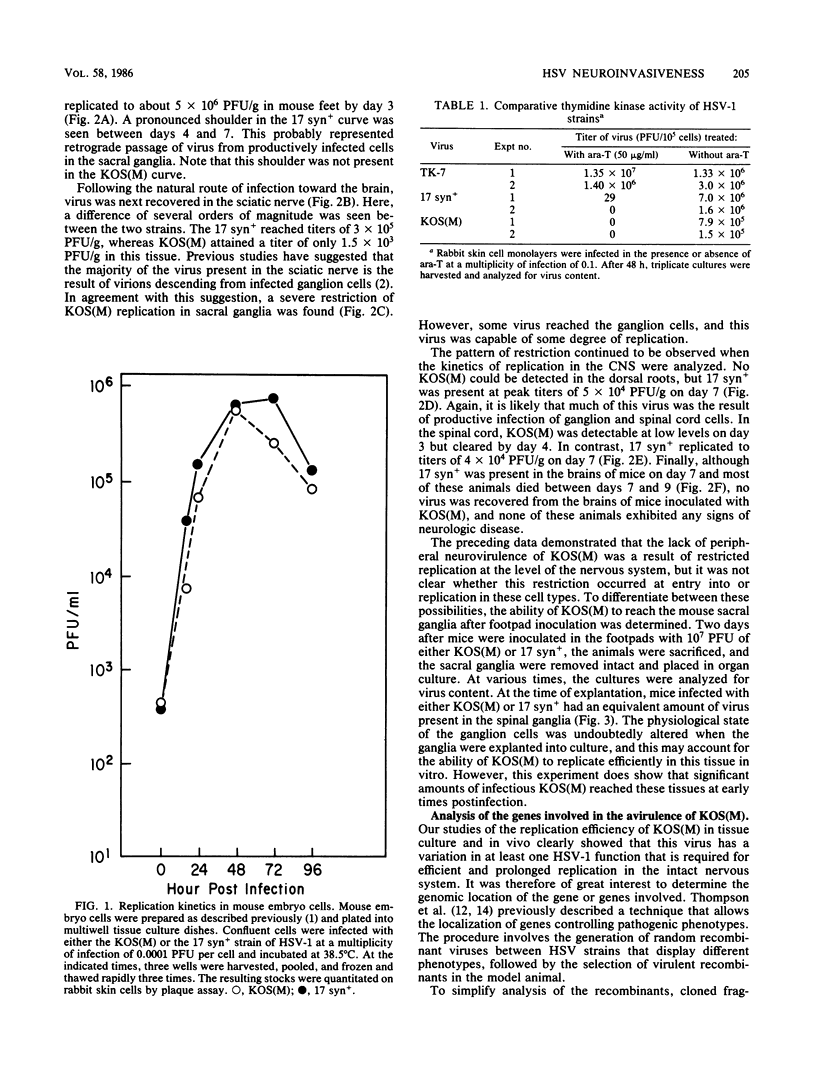
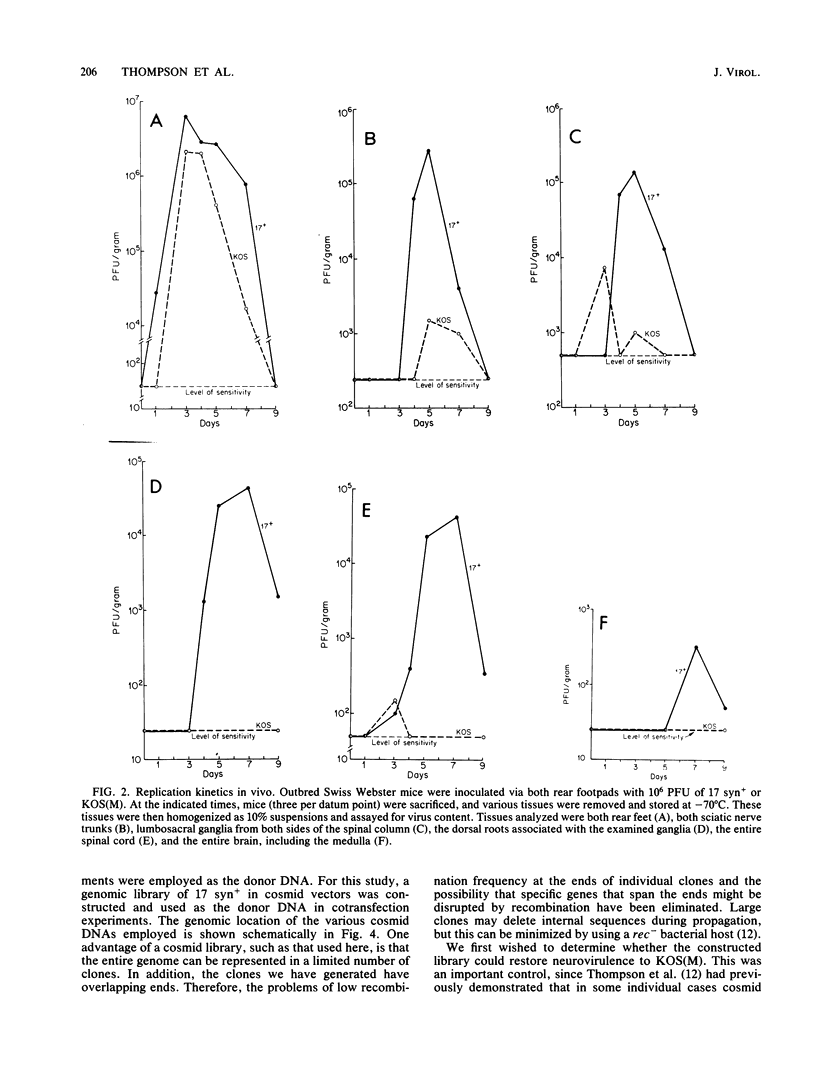
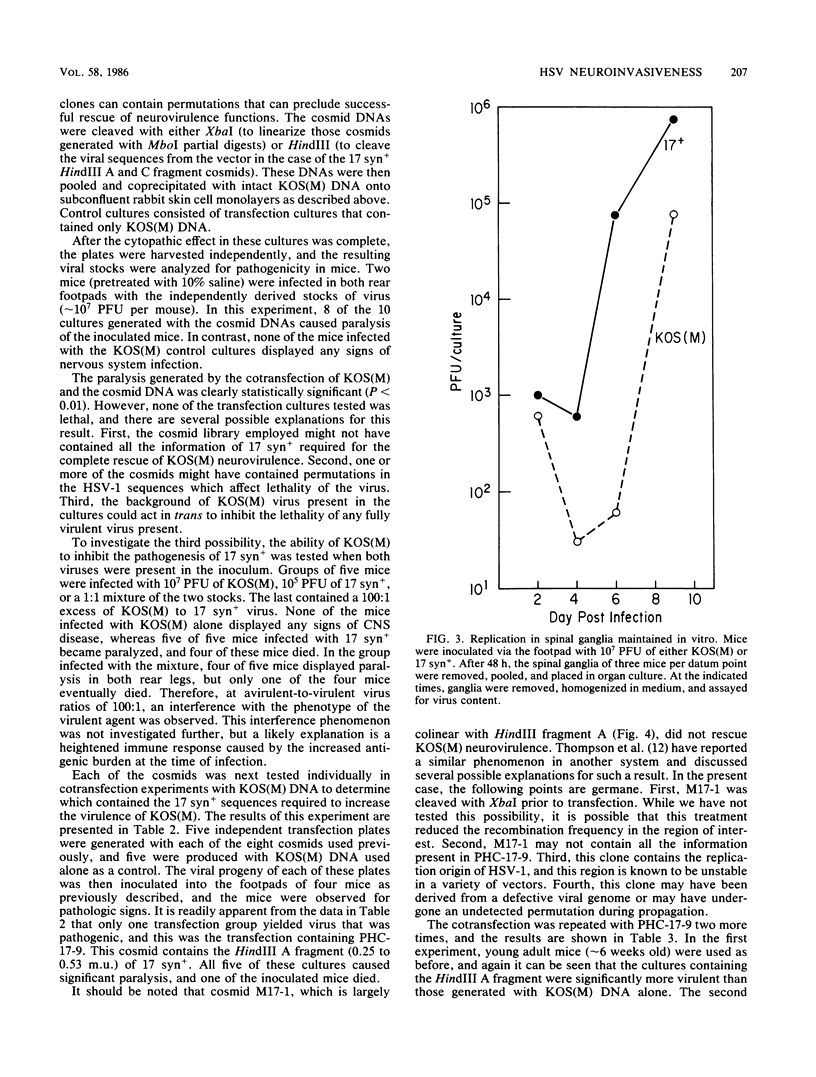
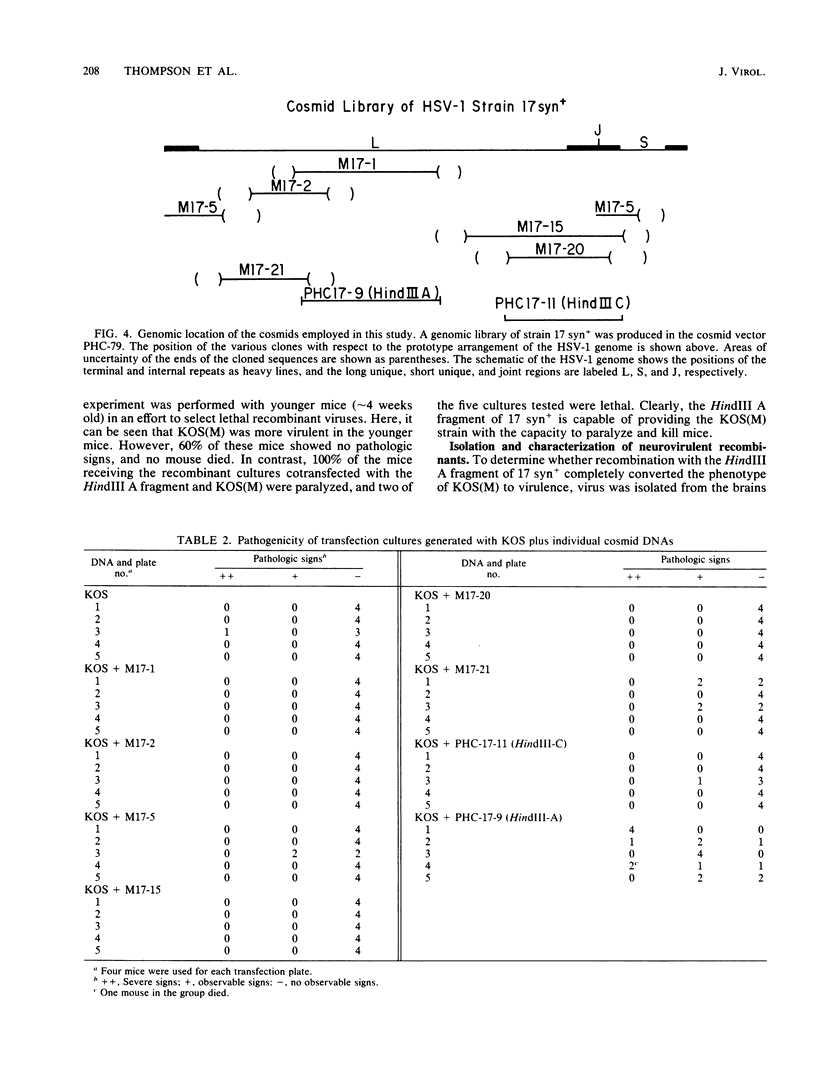
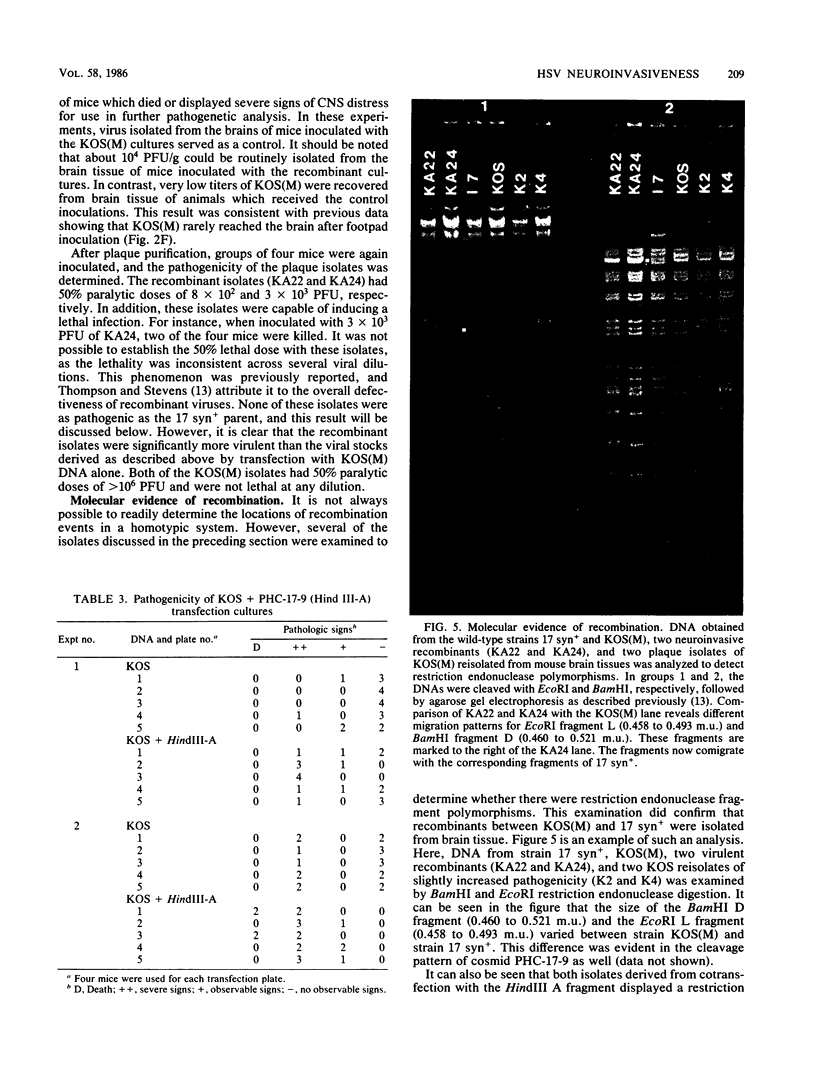
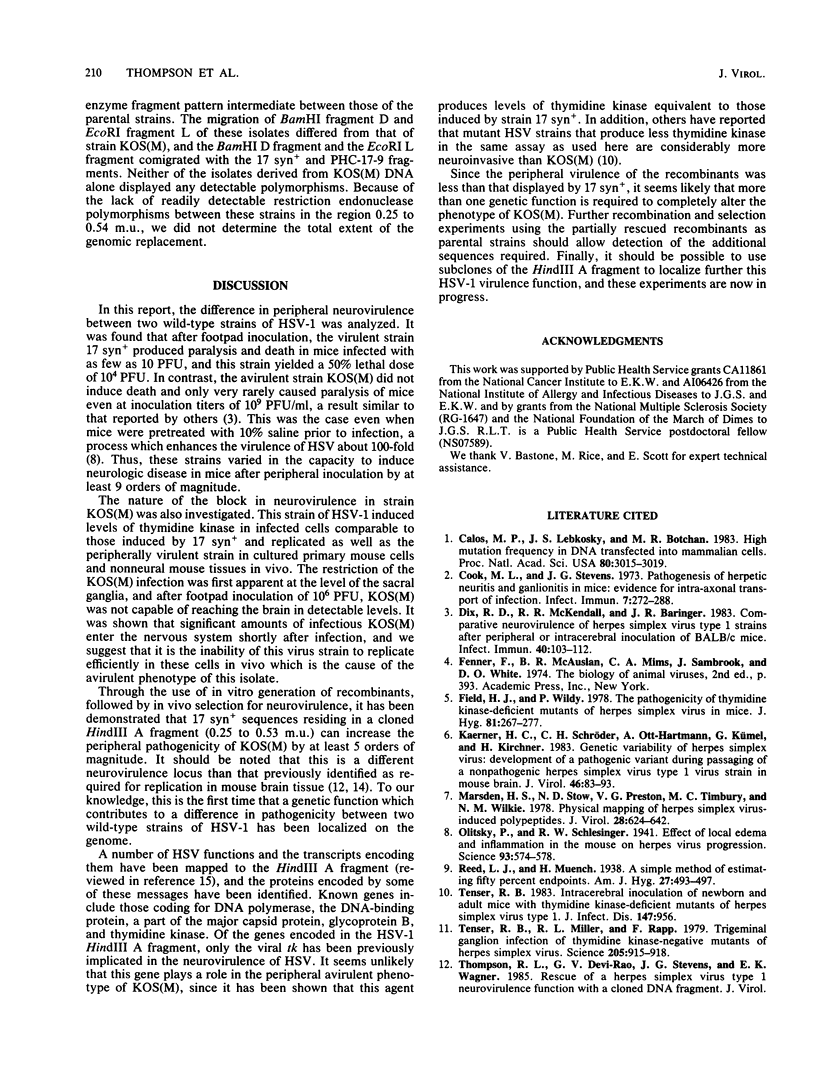
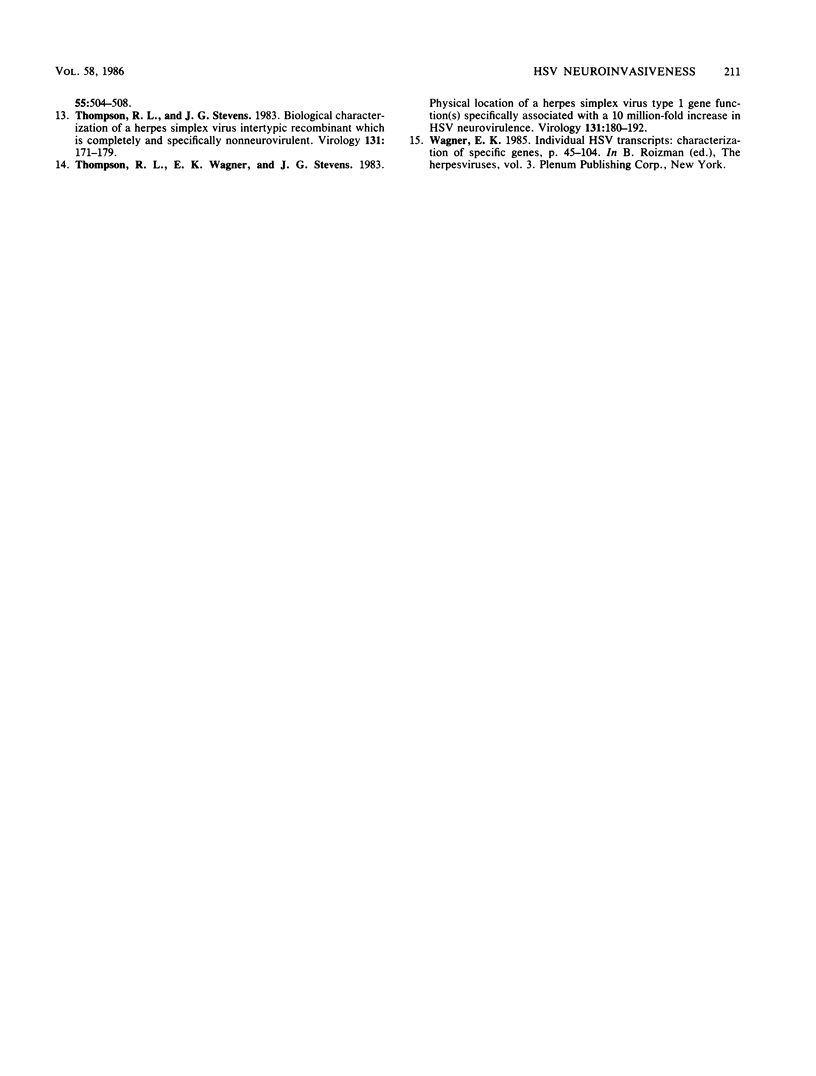
Images in this article
Selected References
These references are in PubMed. This may not be the complete list of references from this article.
- Calos M. P., Lebkowski J. S., Botchan M. R. High mutation frequency in DNA transfected into mammalian cells. Proc Natl Acad Sci U S A. 1983 May;80(10):3015–3019. doi: 10.1073/pnas.80.10.3015. [DOI] [PMC free article] [PubMed] [Google Scholar]
- Cook M. L., Stevens J. G. Pathogenesis of herpetic neuritis and ganglionitis in mice: evidence for intra-axonal transport of infection. Infect Immun. 1973 Feb;7(2):272–288. doi: 10.1128/iai.7.2.272-288.1973. [DOI] [PMC free article] [PubMed] [Google Scholar]
- Dix R. D., McKendall R. R., Baringer J. R. Comparative neurovirulence of herpes simplex virus type 1 strains after peripheral or intracerebral inoculation of BALB/c mice. Infect Immun. 1983 Apr;40(1):103–112. doi: 10.1128/iai.40.1.103-112.1983. [DOI] [PMC free article] [PubMed] [Google Scholar]
- Field H. J., Wildy P. The pathogenicity of thymidine kinase-deficient mutants of herpes simplex virus in mice. J Hyg (Lond) 1978 Oct;81(2):267–277. doi: 10.1017/s0022172400025109. [DOI] [PMC free article] [PubMed] [Google Scholar]
- Kaerner H. C., Schröder C. H., Ott-Hartmann A., Kümel G., Kirchner H. Genetic variability of herpes simplex virus: development of a pathogenic variant during passaging of a nonpathogenic herpes simplex virus type 1 virus strain in mouse brain. J Virol. 1983 Apr;46(1):83–93. doi: 10.1128/jvi.46.1.83-93.1983. [DOI] [PMC free article] [PubMed] [Google Scholar]
- Marsden H. S., Stow N. D., Preston V. G., Timbury M. C., Wilkie N. M. Physical mapping of herpes simplex virus-induced polypeptides. J Virol. 1978 Nov;28(2):624–642. doi: 10.1128/jvi.28.2.624-642.1978. [DOI] [PMC free article] [PubMed] [Google Scholar]
- Olitsky P. K., Schlesinger R. W. EFFECT OF LOCAL EDEMA AND INFLAMMATION IN THE SKIN OF THE MOUSE ON THE PROGRESSION OF HERPES VIRUS. Science. 1941 Jun 13;93(2424):574–575. doi: 10.1126/science.93.2424.574. [DOI] [PubMed] [Google Scholar]
- Tenser R. B. Intracerebral inoculation of newborn and adult mice with thymidine kinase-deficient mutants of herpes simplex virus type 1. J Infect Dis. 1983 May;147(5):956–956. doi: 10.1093/infdis/147.5.956. [DOI] [PubMed] [Google Scholar]
- Tenser R. B., Miller R. L., Rapp F. Trigeminal ganglion infection by thymidine kinase-negative mutants of herpes simplex virus. Science. 1979 Aug 31;205(4409):915–917. doi: 10.1126/science.224454. [DOI] [PubMed] [Google Scholar]
- Thompson R. L., Devi-Rao G. V., Stevens J. G., Wagner E. K. Rescue of a herpes simplex virus type 1 neurovirulence function with a cloned DNA fragment. J Virol. 1985 Aug;55(2):504–508. doi: 10.1128/jvi.55.2.504-508.1985. [DOI] [PMC free article] [PubMed] [Google Scholar]
- Thompson R. L., Stevens J. G. Biological characterization of a herpes simplex virus intertypic recombinant which is completely and specifically non-neurovirulent. Virology. 1983 Nov;131(1):171–179. doi: 10.1016/0042-6822(83)90543-3. [DOI] [PubMed] [Google Scholar]
- Thompson R. L., Wagner E. K., Stevens J. G. Physical location of a herpes simplex virus type-1 gene function(s) specifically associated with a 10 million-fold increase in HSV neurovirulence. Virology. 1983 Nov;131(1):180–192. doi: 10.1016/0042-6822(83)90544-5. [DOI] [PubMed] [Google Scholar]



